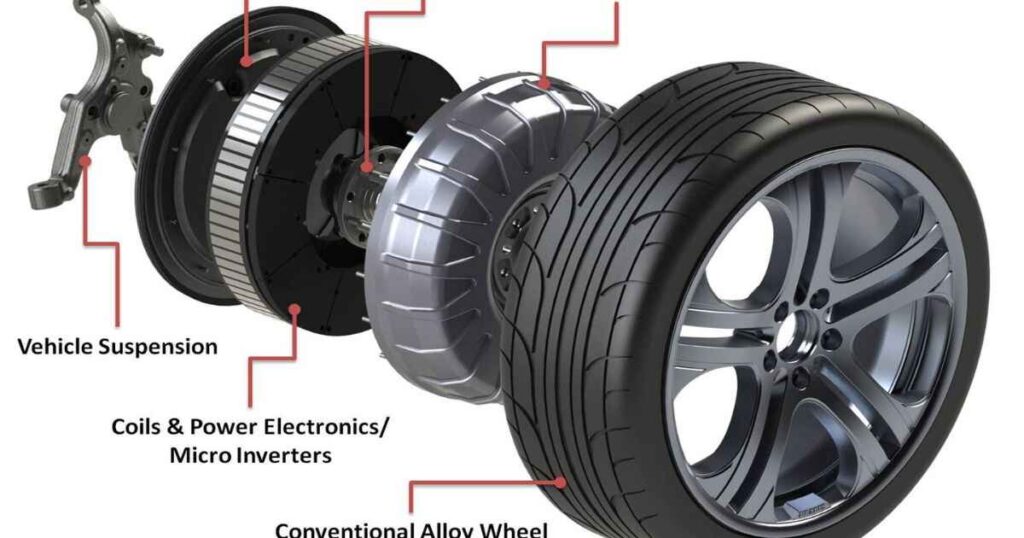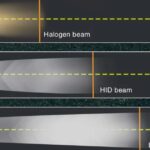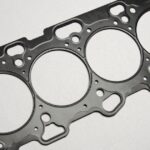Understanding the Importance of Car Wheel Parts
Car wheels are one of the most critical components of a vehicle, responsible for ensuring a smooth and safe ride. Without properly functioning wheel parts, the entire driving experience would be compromised.
Each component plays a vital role in the overall performance and longevity of your car’s wheels. In this comprehensive guide, we’ll dive deep into the essential parts that make up a car wheel, helping you understand their functions and significance.
Breaking Down the Key Components of Car Wheels
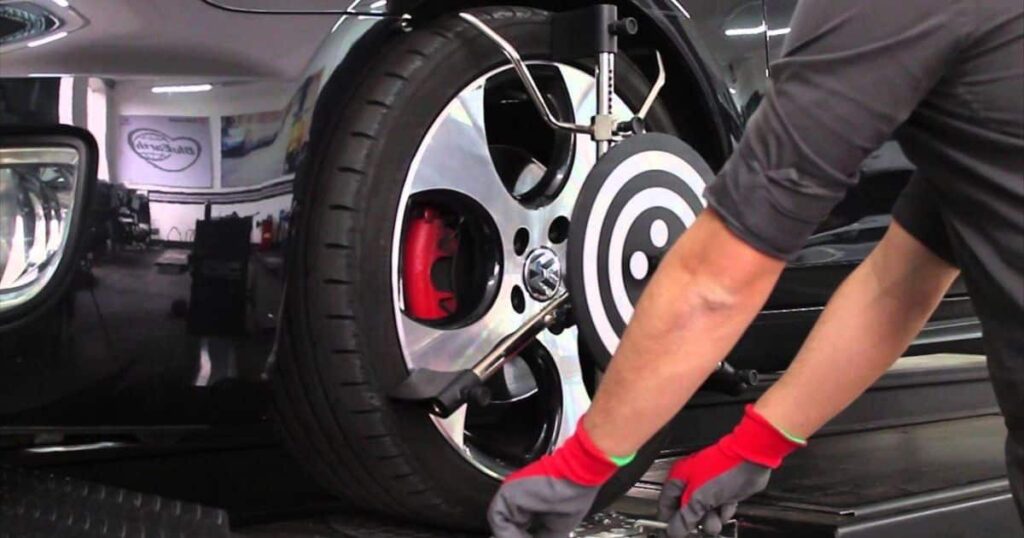
1. The Tire
The tire is undoubtedly the most visible and recognizable part of a car wheel. Its primary function is to provide traction and grip on the road surface, ensuring a smooth and controlled ride. Tires come in various types, each designed to cater to different driving conditions and needs:
- All-season tires: As the name suggests, these tires are suitable for year-round use and offer a balance between performance and durability.
- Winter tires: Specifically designed for cold weather conditions, winter tires feature deep grooves and specialized rubber compounds that enhance traction on snow and ice.
- Summer tires: Engineered for optimal performance in warm weather, summer tires prioritize handling and grip on dry roads.
Proper tire maintenance, including regular rotation, inflation checks, and timely replacement, is crucial for ensuring safety and maximizing the lifespan of your tires.
2. The Rim
The rim, also known as the wheel, is the foundation upon which the tire is mounted. It is responsible for supporting the weight of the vehicle and providing a sturdy base for the tire. Rims are typically made from either steel or aluminum alloy, with each material offering its own advantages:
- Steel rims: Durable and cost-effective, steel rims are a popular choice for many vehicles. They are resistant to damage and can withstand heavy loads.
- Aluminum alloy rims: Lighter in weight compared to steel, aluminum alloy rims offer improved fuel efficiency and enhanced acceleration. They also come in a wide range of stylish designs, allowing for customization.
Rims are available in various sizes and styles, ranging from sleek and sporty to rugged and utilitarian, catering to different vehicle types and personal preferences.
3. The Hub
The hub is the central component that connects the wheel assembly to the vehicle’s axle. It houses crucial elements such as brake pads, calipers, and rotors, which are essential for effective braking and control. The hub plays a crucial role in transferring the rotational force from the axle to the wheels, enabling the vehicle to move forward or backward.
Regular maintenance of the hub assembly, including inspecting and replacing worn-out bearings and seals, is crucial for ensuring smooth operation and preventing premature failure.
4. Spokes
Spokes are the structural elements that connect the hub to the rim, providing rigidity and strength to the overall wheel assembly. They are designed to withstand the immense forces and stresses that wheels endure during driving.
Spoke patterns and designs vary widely, ranging from the classic five-spoke configuration to intricate multi-spoke designs. While the number of spokes primarily serves an aesthetic purpose, it can also affect the overall weight and performance of the wheel.
Notable spoke designs include:
- Five-spoke wheels: A common and well-balanced design that reduces torsional vibrations.
- Multi-spoke wheels: Featuring numerous spokes for a distinctive and visually striking appearance.
- Solid-faced wheels: Primarily used on trucks and trailers, these wheels have a solid face without visible spokes.
5. Outer Lip and Barrel
The outer lip, also known as the dish, is the portion of the wheel that extends beyond the spokes, adding visual depth and style. A deep-dish design, where the spokes are significantly distanced from the outer edge, is primarily for aesthetic purposes and can make the wheel more susceptible to impact damage.
The barrel is the outermost part of the wheel that creates the necessary structure for mounting the tire. It features several critical components:
- Drop center: The narrowest part of the barrel, designed to mount the tire without overstretching the bead wires.
- Flanges: Flared edges along the inboard and outboard sides of the rim that prevent the tire from slipping off.
- Beads: Flat areas just inside the flanges where the edges of the tire sit onto the wheel.
6. Additional Wheel Parts
While the primary components have been covered, there are a few additional parts that play important roles in the overall functioning of a car wheel:
- Valve stem: A metal-air valve inserted into a hole in the rim, used to inflate the tire and monitor its air pressure.
- Center cap: A removable piece that covers the center bore on the outside, often protecting the lug nuts from damage.
- Lug nuts and wheel locks: Lug nuts secure the wheel to the vehicle’s hub, while wheel locks help prevent theft by requiring a special key for removal.
Read More About: Best Places To Buy Tires In 2024
Maintaining and Caring for Car Wheel Parts
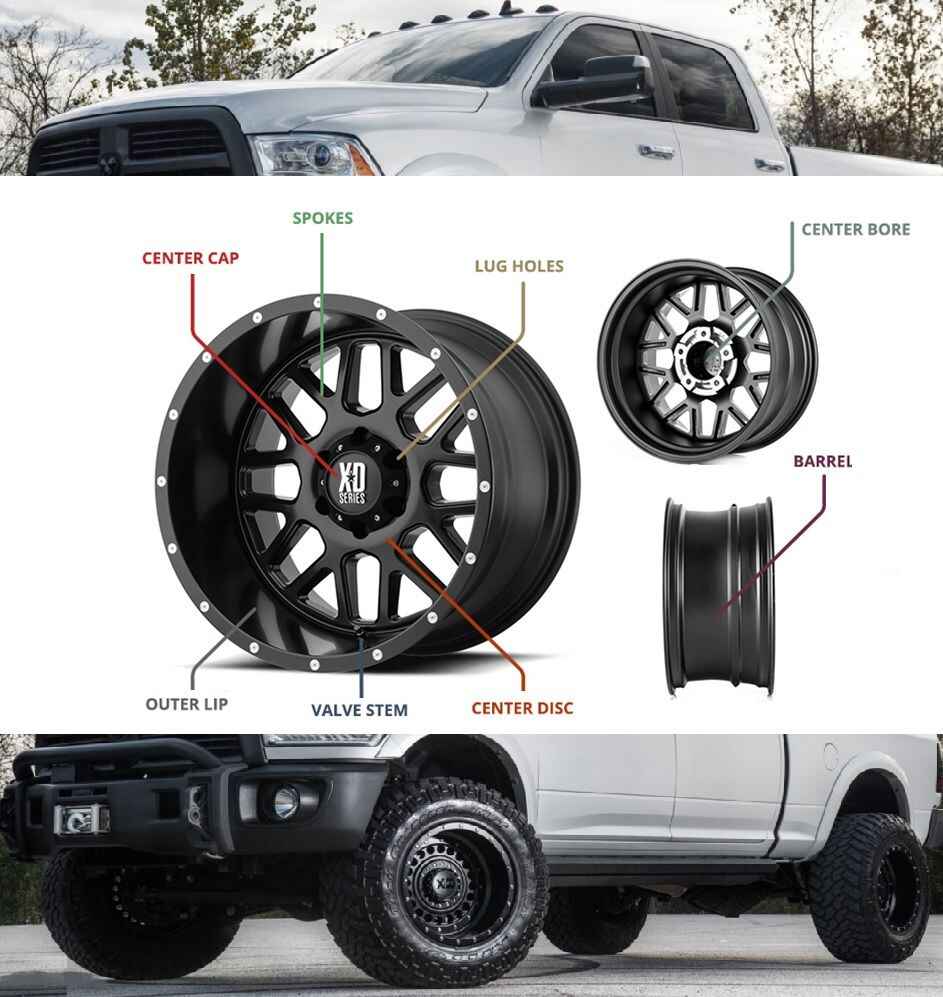
Proper maintenance and care are essential for ensuring the longevity and optimal performance of your car’s wheel parts. Regular inspections and timely replacements can prevent costly repairs and ensure your safety on the road.
One crucial aspect of wheel maintenance is wheel balancing and alignment. Imbalanced or misaligned wheels can cause premature tire wear, vibrations, and even suspension issues. It’s recommended to have your wheels balanced and aligned periodically, especially after hitting potholes or curbs.
When it comes to signs of wear and tear, be on the lookout for:
- Uneven tire wear patterns
- Cracks or bulges in the tire sidewalls
- Dents or damage to the rims
- Excessive play or noise in the wheel bearings
Neglecting these signs can lead to more severe problems, so it’s essential to address them promptly. Consult with a professional mechanic or tire specialist to determine the appropriate course of action, whether it’s tire rotation, replacement, or wheel repair.
Choosing the Right Wheel Parts for Your Vehicle
Selecting the right wheel parts for your vehicle is crucial for ensuring optimal performance, safety, and aesthetics. Several factors should be considered when making this decision:
- Vehicle compatibility: Ensure that the wheel parts you choose are compatible with your vehicle’s make, model, and year. Consult your owner’s manual or a trusted mechanic for guidance.
- Fitment and sizing: Wheel size and offset play a significant role in ensuring proper fitment and avoiding rubbing or clearance issues. Always refer to professional recommendations or use online fitment calculators.
- Load rating and weight: The wheel parts you choose should be able to support the weight of your vehicle under various load conditions, especially if you frequently carry heavy cargo or tow trailers.
- Customization and style: For many car enthusiasts, the aesthetic appeal of wheel parts is essential. Aftermarket wheels offer a wide range of designs, finishes, and customization options to suit your personal preference and enhance the overall appearance of your vehicle.
When exploring customization options, it’s crucial to balance style with functionality and ensure that any modifications adhere to local regulations and safety standards.
Conclusion
Understanding the various components of a car wheel is essential for maintaining the safety, performance, and longevity of your vehicle. From the tire that grips the road to the hub that connects the wheel to the axle, each part plays a crucial role.
Regular maintenance, such as tire rotations, wheel balancing, and alignment checks, can prevent premature wear and costly repairs. Additionally, being mindful of signs of damage or wear on wheel parts can help you address issues promptly and avoid potential safety hazards.
When it comes to selecting new wheel parts or upgrading your existing setup, consider factors like vehicle compatibility, fitment, load rating, and personal style preferences. Consulting with professionals and adhering to manufacturer recommendations can ensure a seamless and safe installation process.
By understanding the intricacies of car wheel parts and practicing proper maintenance, you can enjoy a smooth, safe, and reliable ride for years to come.

